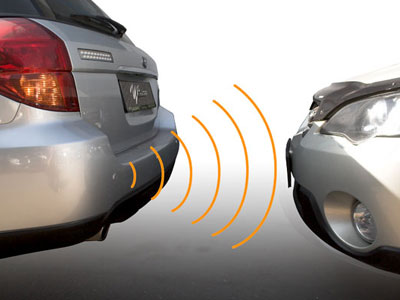
Adaptive cruise control (ACC): device, principle of operation and rules for using on the road
Content
Increasing the comfort of cars also includes ridding the driver of those monotonous functions that automation can take on. Including maintaining speed. Such devices have been known for a long time, they are called cruise controls.

The development of such systems goes from simple to complex, at the moment they are already able to adapt to external circumstances, having received such capabilities as technical vision and analysis of the environment.
What is adaptive cruise control and how is it different from conventional
The simplest cruise control system appeared as a further development of the speed limiter, which did not allow the driver to exceed its permitted or reasonable limits.
The logical change in the limiter was the introduction of a regulatory function, when it is possible not only to turn off the gas when the speed threshold is set, but also to maintain its value at the selected level. It was this set of equipment that became known as the first cruise control.
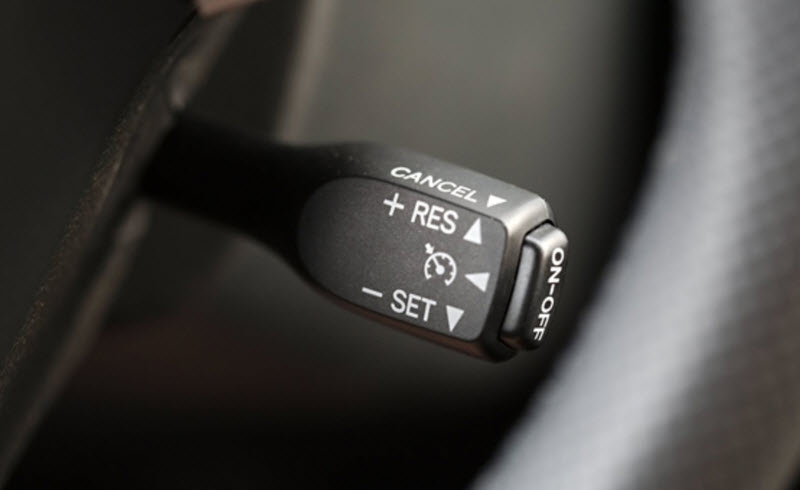
It appeared back in the late 50s of the 20th century on American cars, known for their high demands on driver comfort.
The equipment improved, became cheaper, as a result, it became possible to equip the speed control systems with the functions of observing obstacles in front of the car.
To do this, you can use locators operating in different frequency ranges of electromagnetic radiation. The sensors were divided into those operating at very high frequencies of the infrared range, for which IR lasers (lidars) were used, as well as lower frequency traditional radars.
With their help, the system could capture the vehicle in front, similar to the way homing aircraft missiles do, and track its speed, as well as the distance to the target.
Thus, cruise control began to have the property of adapting to the position of vehicles on the road, setting the speed depending on the data received and the initial settings set by the driver.
The option was called adaptive or active cruise control (ACC), emphasizing in the second case the presence of its own emitter of radio waves or an IR laser beam.
Principle of operation
The distance sensor to the leading vehicle continuously outputs information about the distance to the on-board computer, which also calculates its speed, deceleration parameters and reduction or increase in distance.
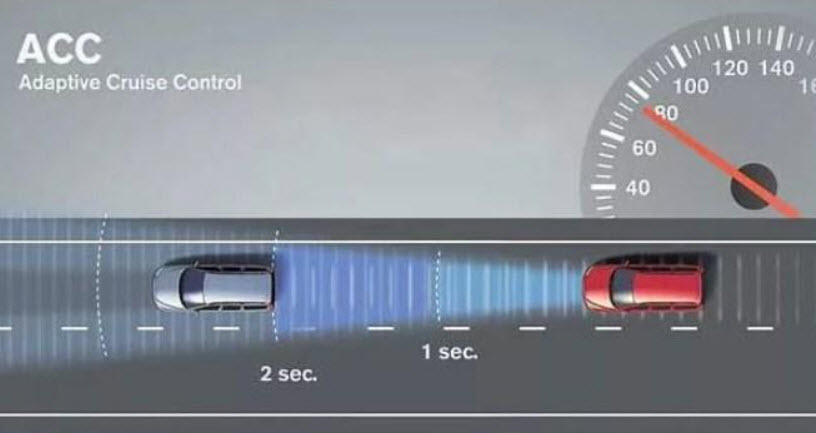
The data is analyzed and compared with the model of the situation stored in the memory, including the parameters of the speed limit set by the driver.
Based on the result of the work, commands are given to the accelerator pedal drive or directly to the electromechanical throttle.
The car tracks the given distance by increasing or decreasing the speed, if necessary, using the brake system through the instruments and mechanisms of the ABS systems and associated stabilization modules, emergency braking and other driver assistants.
The most advanced systems are capable of influencing the steering, although this does not apply directly to cruise control.
The speed control range has a number of limitations:
- activation of the operating mode starting from a certain lower speed threshold, which implies orientation to the motorway;
- sometimes short-range sensors are used, which work more efficiently in urban conditions, up to traffic in traffic jams with short stops;
- the upper speed limit is set by the driver or limited by the capabilities of the vehicle for safety reasons;
- when a fixed obstacle enters the field of view, for example, a stopped vehicle that has not been tracked before, the system will not react to it in any way;
- the maximum distance at which the radar captures the leader is on average 120-200 meters.
If a failure is detected in any of the vehicle systems involved, cruise control is automatically disabled.
Устройство
The ACC system contains its own components and devices, and also uses those already on the car:
- radars or lidars for detecting obstacles with different ranges, while RF sensors work better in conditions of obstructed visibility, precipitation or fog;
- accelerator pedal activator or electronic throttle;
- microcomputer system control module;
- sound and light indicators, information board and push-button control panel;
- communication interfaces with ABS and ESP systems;
- brake and accelerator pedal sensors.
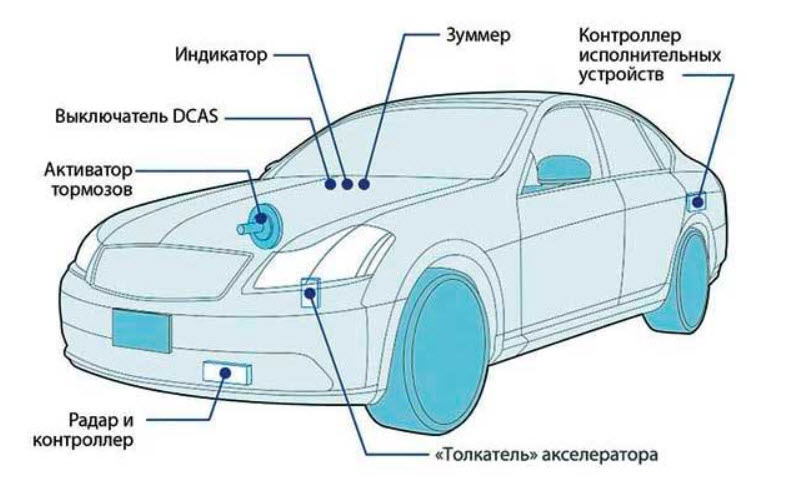

The basis of the device is a control program that contains all the complex algorithms of the ACC in a variety of conditions.
Which cars are equipped with ACC
Currently, the ACC system can be installed on almost any car as an option, although it is most often found in the premium segment.
This is due to its rather high cost. A good set will cost 100-150 thousand rubles.


Watch this video on YouTube
Each car company has its own marketing names for essentially the same system with minor changes in controls.
ACCs can be referred to traditionally as Adaptive Cruise Control or Active Cruise Control, or more individually, using the words Radar, Distance, or even Preview.
For the first time, the system was applied on Mercedes cars under the brand name Distronic.
How to use adaptive cruise control
Usually, all ACC controls are displayed on the steering column switch handle, which activates the system, selects speed, distance, restarts cruise mode after automatic shutdown and adjusts parameters.
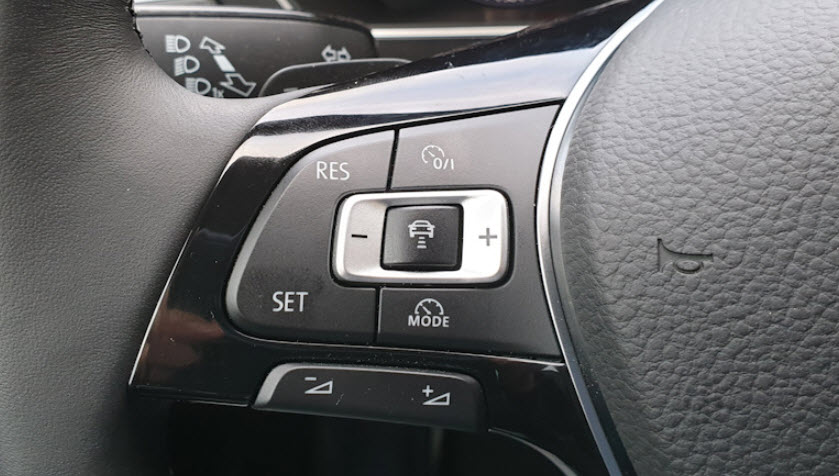

It is possible to use the keys on the multifunction steering wheel.
Approximate order of work:
- preliminary setting of initial parameters through the menu of the vehicle information system, such as adjustment of the intensity of accelerations, distance control modes, speed ranges;
- enabling adaptive cruise control;
- after entering the regulation mode, you can adjust the desired distance or maximum speed;
- when you exit regulation mode, you can resume ACC operation.
The system may shut down when certain events occur:
- pressing the cancel button;
- the driver has chosen neutral gear or pressed the brake pedal;
- one of the driver assistance systems in extreme situations has worked;
- temporarily - if the driver presses the accelerator, work will resume after releasing the pedal;
- the maximum speed or maximum engine speed has been reached;
- faults are found in the system.
When using ACC, there may be situations where the cruise control may not work adequately. The most common is the lack of reaction to a fixed obstacle that suddenly appeared in the lane.
The system does not pay attention to such objects, even if they are moving at a speed of no more than 10 km/h. It is the responsibility of the driver or the emergency braking systems, if available, to take immediate action in such cases.
The ACC may malfunction if a vehicle is suddenly entering its field of vision. Vehicles leaving from the side will also not be seen. Small-sized obstacles may be in the strip, but not fall into the radar acquisition beam.
When overtaking, the car will start to pick up speed, but rather slowly, in this case, you need to press the accelerator. At the end of overtaking, regulation will resume.
In a traffic jam, distance tracking will automatically turn off if the vehicles stand still long enough.
The specific time is individual for each car, but after pressing the gas, the system will return to work.


Watch this video on YouTube
Advantages and disadvantages
The main advantage is the partial unloading of the driver from control during long trips on motorways, including at night, as well as when driving in slowly creeping traffic jams.
But so far, ACC systems are not perfect, so there are quite a few shortcomings:
- a radar type sensor, and especially a laser one, often gets dirty and fails before cleaning;
- the system does not respond well to suddenly appearing obstacles;
- The driver's concentration on driving inevitably decreases with time spent in automatic mode, which can lead to a slow reaction to a sudden situation;
- there are dangerous cases in case of unexpected changes in the regulated distance of cars from neighboring rows;
- there are restrictions when driving along the curves of the road, starting from a certain turning radius;
- sometimes the car can suddenly slow down due to radar malfunctions, which is dangerous if the drivers behind do not keep a safe distance.
In general, the system is quite convenient, and drivers quickly get used to it, after which, already changing to another car, they begin to experience discomfort from its absence.
This is likely to happen as all other autonomous driving assistants are introduced, after which driver intervention will be determined more by sports rather than transportation needs.
